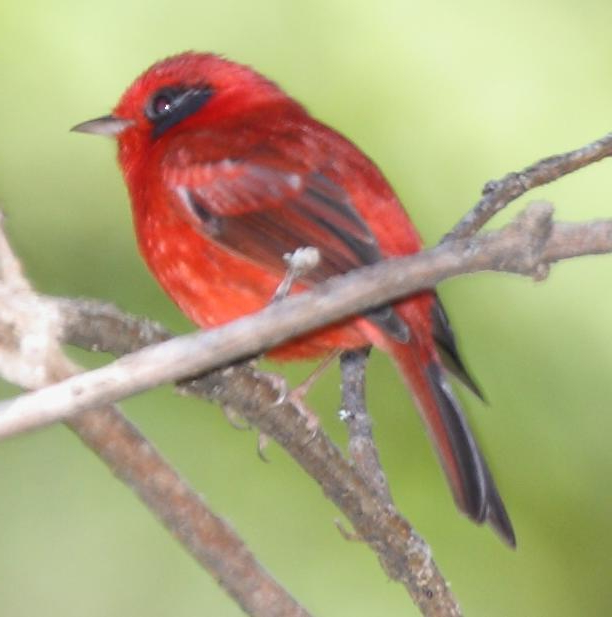|
Wilsonia Pusilla
Wilson's warbler (''Cardellina pusilla'') is a small New World warbler. It is greenish above and yellow below, with rounded wings and a long, slim tail. The male has a black crown patch; depending on the subspecies, that mark is reduced or absent in the female. It breeds across Canada and south through the western United States, and winters from Mexico south through much of Central America. It is a very rare vagrant to western Europe. Taxonomy Wilson's warbler was formally described in 1811 by the ornithologist Alexander Wilson under the binomial name ''Muscicapa pusilla''. The type locality is southern New Jersey. The species was moved to the genus '' Wilsonia'' by the naturalist and ornithologist Charles Lucien Bonaparte in 1838. Zoologist Thomas Nuttall moved it to ''Sylvania'' in 1840, and by 1845, many authors included it in ''Myiodioctes.'' In 1899, the American Ornithological Union returned the species to ''Wilsonia.'' The species is currently assigned to the genus ''Card ... [...More Info...] [...Related Items...] OR: [Wikipedia] [Google] [Baidu] |
Alexander Wilson (ornithologist)
Alexander Wilson (July 6, 1766 – August 23, 1813) was a Scottish-American poet, ornithologist, Natural history, naturalist, and illustrator. Identified by George Ord as the "Father of American Ornithology", Wilson is regarded as the greatest American ornithologist before John James Audubon, Audubon. Biography Early life Wilson was born in a Presbyterian family in Paisley, Renfrewshire, Paisley, Scotland on July 6, 1766. Alexander senior ("Saunders") had given up smuggling and taken up weaving where he did well and he supplemented income with liquor distilling. The American revolution had caused economic hardship and after the death of Wilson's mother, Mary McNab, his father remarried and moved to Auchenbathie Tower, Auchinbathie. Wilson got a little bit of schooling but spent time herding livestock and at thirteen he apprenticed with his brother-in-law William Duncan. He also worked four years as a journeyman, shooting grouse in free time and peddling wares across Scotland. ... [...More Info...] [...Related Items...] OR: [Wikipedia] [Google] [Baidu] |
Zoologist
Zoology ( , ) is the scientific study of animals. Its studies include the structure, embryology, classification, habits, and distribution of all animals, both living and extinct, and how they interact with their ecosystems. Zoology is one of the primary branches of biology. The term is derived from Ancient Greek , ('animal'), and , ('knowledge', 'study'). Although humans have always been interested in the natural history of the animals they saw around them, and used this knowledge to domesticate certain species, the formal study of zoology can be said to have originated with Aristotle. He viewed animals as living organisms, studied their structure and development, and considered their adaptations to their surroundings and the function of their parts. Modern zoology has its origins during the Renaissance and early modern period, with Carl Linnaeus, Antonie van Leeuwenhoek, Robert Hooke, Charles Darwin, Gregor Mendel and many others. The study of animals has largely mov ... [...More Info...] [...Related Items...] OR: [Wikipedia] [Google] [Baidu] |
Cardellina Pusilla - Wilson's Warbler - XC108402
''Cardellina'' is a genus of passerine birds in the New World warbler family Parulidae. The genus name ''Cardellina'' is a diminutive of the Italian dialect word ''Cardella'' for the European goldfinch. Taxonomy The genus was introduced by the French naturalist Charles Lucien Jules Laurent Bonaparte, Charles Lucien Bonaparte in 1850. The type species was subsequently designated as the red-faced warbler. The genus originally contained one species, the red-faced warbler. A comprehensive study of the wood-warblers published in 2010 that analysed mitochondrial and nuclear DNA sequences found that the five species formed a discrete clade, with the Wilson's and Canada warblers as early offshoots, followed by a lineage that gave rise to two branches – one leading to the red-faced and another that diverged to the red and pink-headed warblers. Spencer Fullerton Baird described the genus ''Ergaticus'' in 1865, using it to separate several species from what he felt was the closely rela ... [...More Info...] [...Related Items...] OR: [Wikipedia] [Google] [Baidu] |

